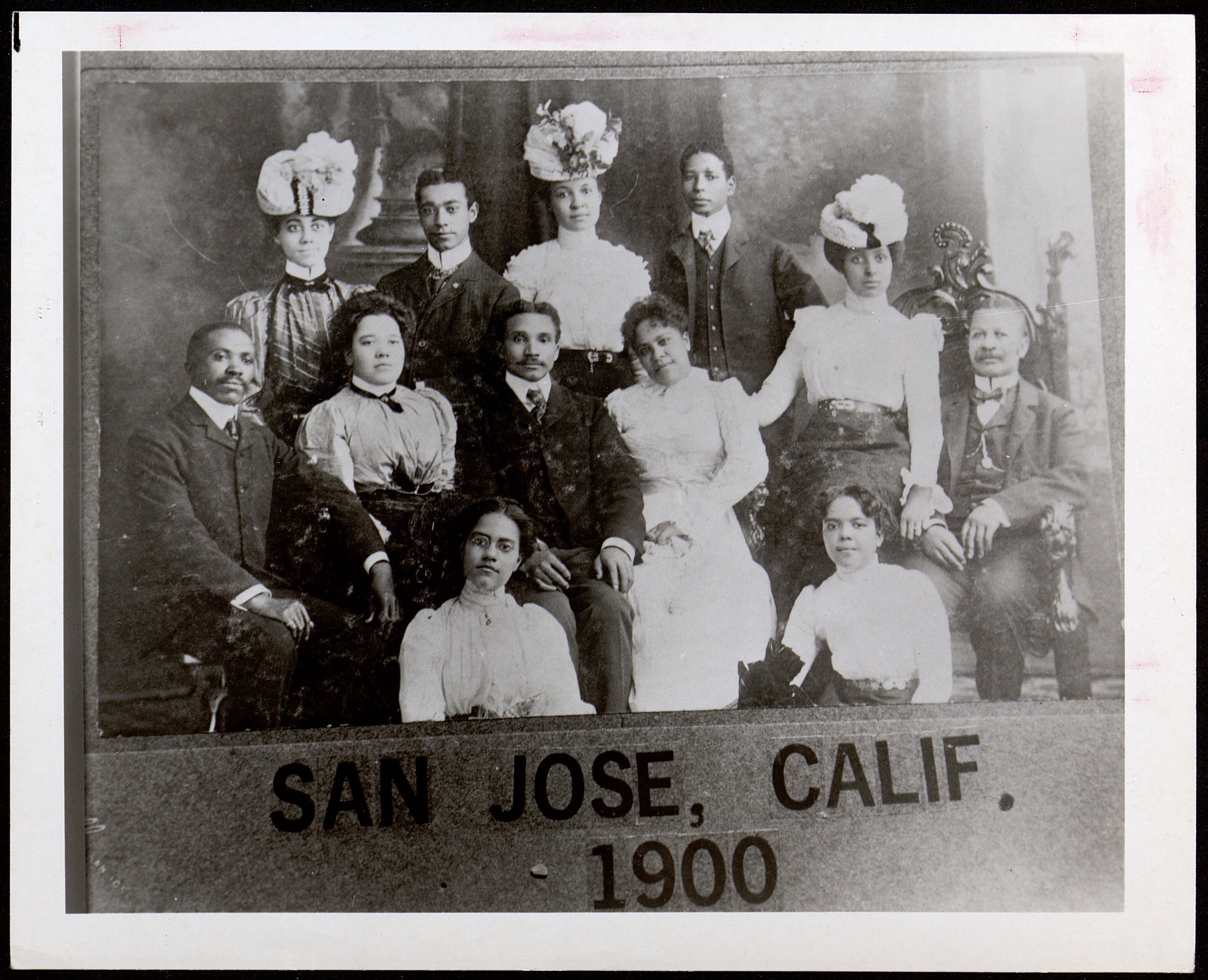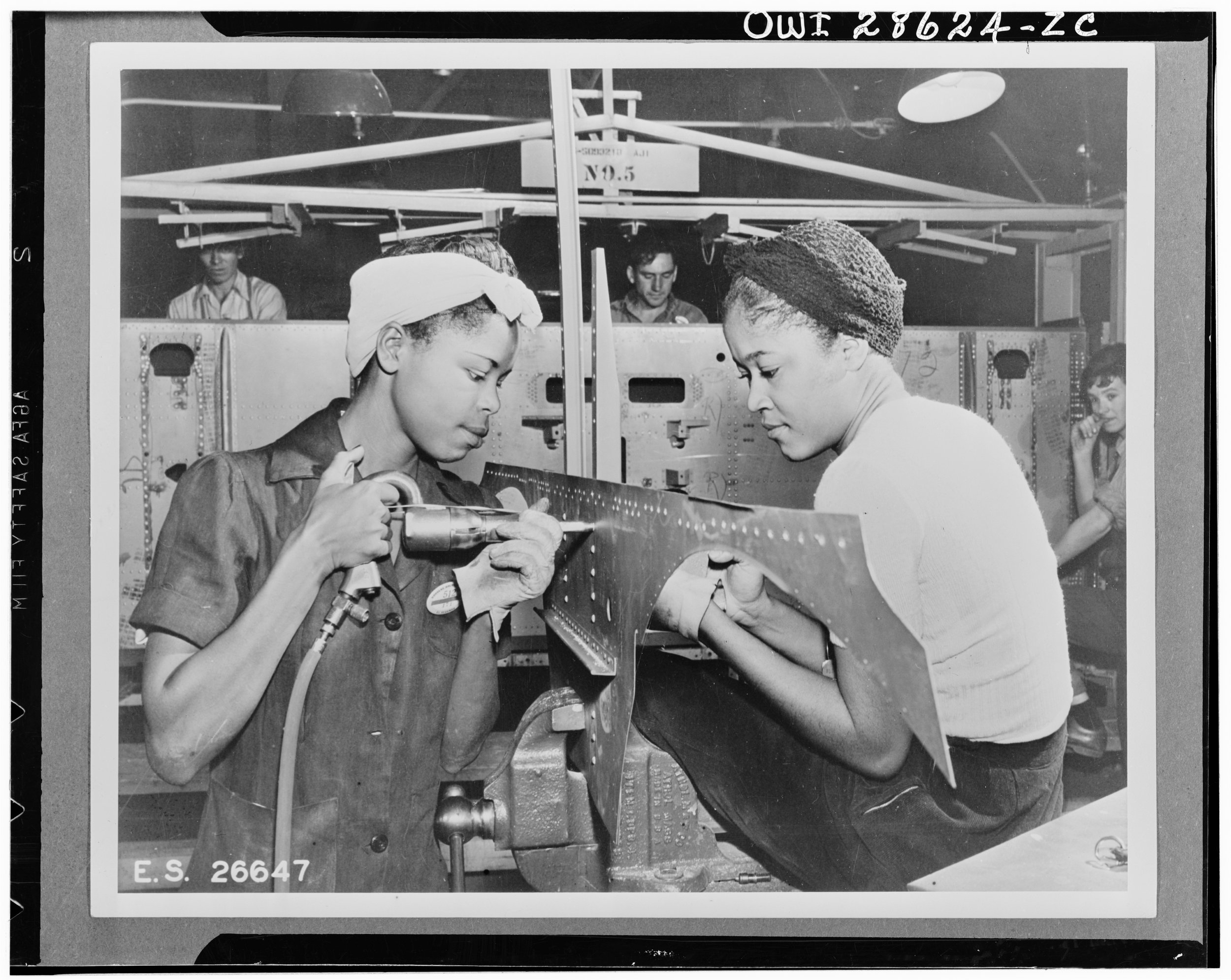
BLACK HISTORY
IN STATE PARKS
The African American History & Engagement Project
Teachers at the Allensworth school, ca. 1915. [California State Parks]

REVEALING BLACK HISTORY IN CALIFORNIA STATE PARKS
African Americans have touched every topographic region of the state: redwood groves, rolling foothills, bustling cities, rural farmland, desert communities, and the Pacific Coast. Today, many of these areas are preserved as California State Parks.
Find Your
California
State Park

Find Your California State Park
-
Northern CA
-
Central CA
-
Southern CA

Local citizens and the Allensworth Advisory Committee entered the prize-winning “Spirit of Allensworth” float in Tulare’s annual Dairy Fiesta Parade, California Department of Parks and Recreation, News & Views, March 1971. [Fresno Bee]
Black California's deep-seated histories have been excluded from park narratives. Out of 280 State Parks sites, only Colonel Allensworth State Historic Park attempts to interpret the African American experience.
The Hunter’s Point crane, a reminder of the region’s once-bustling naval shipyards, as seen from Candlestick Point State Recreation Area, 2024. [Photo: Sue Mark]
Black History in State Parks is The African American History & Engagement (AAH&E) project, a partnership between California State Parks and the California African American Museum (CAAM).
AAH&E researches, documents, and interprets Black community histories in dozens of state parks. The project connects memory keepers and knowledge bearers: external stakeholders, scholars, artists, designers, Parks staff and volunteers, and a curatorial team of archivists.
The African American History & Engagement curatorial team members pose with Bay Area District staff at Angel Island State Park, San Francisco, 2024. [Photo: Sue Mark]
Our powerhouse curatorial team is led by Susan D. Anderson, CAAM's History Curator, in partnership with California State Parks.

“This project is catalytic. The monumentalization of these forgotten histories will be indelible in California’s state parks.”
– Susan D. Anderson, Principal Investigator
![Colonel Allen Allensworth served as Chaplain on Angel Island in the San Francisco Bay. [California State Parks]](https://images.squarespace-cdn.com/content/v1/66d788f292297258a486ae81/803aa299-8b0c-4865-baf3-b0da78d71c19/231-18-006+Angel+Island.jpg)
Colonel Allen Allensworth served as Chaplain on Angel Island in the San Francisco Bay. [California State Parks]
![Colonel Allen Allensworth, the highest-ranking Black officer of his day and an Army Chaplain, led services at this chapel on Angel Island. [Photo: Sue Mark]](https://images.squarespace-cdn.com/content/v1/66d788f292297258a486ae81/93cc3954-a7a7-4e38-879e-4bea12f225f4/AngelIsland-Chapel_-01.jpg)
Colonel Allen Allensworth, the highest-ranking Black officer of his day and an Army Chaplain, led services at this chapel on Angel Island. [Photo: Sue Mark]

Nella (first row, left) and Eva Allensworth (third row, left), daughters of Colonel Allen and Josephine Allensworth, sit for a portrait of prominent citizens, San Jose, California, 1900. [Miriam Matthews Photograph Collection, UCLA Special Collections]
![Teachers at the Allensworth school, c. 1915. [California State Parks]](https://images.squarespace-cdn.com/content/v1/66d788f292297258a486ae81/b6f8ebc4-26b5-474e-864d-524ab4f00e58/090-2156+Allensworth.jpg)
Teachers at the Allensworth school, c. 1915. [California State Parks]
![November 1976 excerpt from News & Views [Department of Parks and Recreation]](https://images.squarespace-cdn.com/content/v1/66d788f292297258a486ae81/0f9d0125-0565-46a5-9a1e-94355e7dab77/aw_026.jpg)
November 1976 excerpt from News & Views [Department of Parks and Recreation]
![Henry Cowes (right), Allensworth, ca. 1918. Together with his wife, Josephine, he operated the Allensworth post office then expanded to include this grocery store. [California State Parks, 090-2135]](https://images.squarespace-cdn.com/content/v1/66d788f292297258a486ae81/397eea0b-1e10-482f-84c6-8e1908d8ccca/090-2135.jpg)
Henry Cowes (right), Allensworth, ca. 1918. Together with his wife, Josephine, he operated the Allensworth post office then expanded to include this grocery store. [California State Parks, 090-2135]
![Both the San Francisco Giants and 49ers played at the now-demolished Candlestick Park, located next to Candlestick Point SRA. [California State Parks]](https://images.squarespace-cdn.com/content/v1/66d788f292297258a486ae81/35b1d544-859d-4d14-bb8d-0eb2181eb2b7/090-32761.jpg)
Both the San Francisco Giants and 49ers played at the now-demolished Candlestick Park, located next to Candlestick Point SRA. [California State Parks]

During WWII, African American women helped construct Libery and Victory ships in the naval shipyards near Candlestick Point Recreation Area. [Farm Security Administration - Office of War Information photograph collection, Library of Congress Prints and Photographs Division]
![Local residents prepare to fish at Candlestick Point State Recreation Area, 1980s. [California State Parks]](https://images.squarespace-cdn.com/content/v1/66d788f292297258a486ae81/fa86f7c0-654c-4f57-be4d-7399db71baf1/090-S10655+Candlestick.jpg)
Local residents prepare to fish at Candlestick Point State Recreation Area, 1980s. [California State Parks]
![Thomas Gilman outside his cabin, undated. During the Gold Rush, Gilman purchased his freedom and mined near Columbia SHP. [California History Room, California State Library, Sacramento]](https://images.squarespace-cdn.com/content/v1/66d788f292297258a486ae81/9cc90ff7-6874-4c9a-b34f-6ee069f080a7/Columbia_TomGillman.jpg)
Thomas Gilman outside his cabin, undated. During the Gold Rush, Gilman purchased his freedom and mined near Columbia SHP. [California History Room, California State Library, Sacramento]
![Historic building and street scene in the heart of Columbia SHP. [California State Parks]](https://images.squarespace-cdn.com/content/v1/66d788f292297258a486ae81/f23d9c9d-90ab-43d0-8293-3a311240ceaa/090-P103947+Columbia.JPG)
Historic building and street scene in the heart of Columbia SHP. [California State Parks]
![African American miner and farmer Thomas Gilman owned property near Columbia State Historic Park. This receipt shows his ranch was valued at nine hundred dollars in 1881. [California History Room, California State Library, Sacramento]](https://images.squarespace-cdn.com/content/v1/66d788f292297258a486ae81/8b73ed39-ac9b-4bb2-af37-237fddb3f88b/Gilman-1881+Property+Tax+Receipt-CSL-FL318026.jpg)
African American miner and farmer Thomas Gilman owned property near Columbia State Historic Park. This receipt shows his ranch was valued at nine hundred dollars in 1881. [California History Room, California State Library, Sacramento]
![A view of Black Miners Bar at Folsom Lake State Recreation Area, 1972. The original townsite had between five and six hundred residents in the 1850s. [California State Parks]](https://images.squarespace-cdn.com/content/v1/66d788f292297258a486ae81/337812df-a787-4fc1-a6bc-aae2ace54bf6/090-S2327+Folsom+Lake.jpg)
A view of Black Miners Bar at Folsom Lake State Recreation Area, 1972. The original townsite had between five and six hundred residents in the 1850s. [California State Parks]

Map of Rancho Rio de los Americanos, May 1857. This 35,521-acre plot in present-day Sacramento County was owned by Afro-Caribbean businessman William Alexander Leidesdorff until his death in 1848. [Bancroft Library, University of California, Berkeley]
![The 1996 marker memorializing the original mining sites of Negro Bar and Texas Hill, located on the historic land of William Alexander Leidesdorff's Rio de los Ranchos Americanos. [Photo: Sela Kerr]](https://images.squarespace-cdn.com/content/v1/66d788f292297258a486ae81/004f78b0-9a3c-4546-a50a-aa49398c25d8/Negro+Bar+Original+Site+Obelisk+.JPG)
The 1996 marker memorializing the original mining sites of Negro Bar and Texas Hill, located on the historic land of William Alexander Leidesdorff's Rio de los Ranchos Americanos. [Photo: Sela Kerr]
![The tranquility of Fort Ord Dunes State Park belies its history as the first interracial military base in California. [California State Parks]](https://images.squarespace-cdn.com/content/v1/66d788f292297258a486ae81/d028dbaa-d1b9-4a26-9bdb-cb901cdc291c/090-P55218+Fort+Ord.jpg)
The tranquility of Fort Ord Dunes State Park belies its history as the first interracial military base in California. [California State Parks]
![Leroy Gatewood (center) poses with fellow soldiers at Fort Ord after the Post's 1948 integration. [Gatewood Family and Black Gold Cooperative Library System]](https://images.squarespace-cdn.com/content/v1/66d788f292297258a486ae81/3fdd5e7e-370d-4100-a7f9-b55e0144686d/FORT+ORD++-+Leroy+Gatewood+1948.jpg)
Leroy Gatewood (center) poses with fellow soldiers at Fort Ord after the Post's 1948 integration. [Gatewood Family and Black Gold Cooperative Library System]
![An ammunition bunker at Fort Ord Dunes State Park. About 1.7 million soldiers trained at this interracial US Army post. [California State Parks]](https://images.squarespace-cdn.com/content/v1/66d788f292297258a486ae81/6af2d8d0-f93d-4b86-8237-514ec730daf3/090-P76395+Fort+Ord.jpg)
An ammunition bunker at Fort Ord Dunes State Park. About 1.7 million soldiers trained at this interracial US Army post. [California State Parks]
![Allen Light, an African American mariner and Mexican citizen, protected California's coastline from poachers. Workers discovered his sailors’ protection papers in a wall in 1948. [Photo: Sue Mark]](https://images.squarespace-cdn.com/content/v1/66d788f292297258a486ae81/35ffa3ed-ac72-49ea-9a55-0cf5c7d2a578/SD-LightPapers-B.jpg)
Allen Light, an African American mariner and Mexican citizen, protected California's coastline from poachers. Workers discovered his sailors’ protection papers in a wall in 1948. [Photo: Sue Mark]
![Jose Antonio Estudillo House, constructed in 1827 by the prominent Estudillo family and located in Old Town San Diego State Historic Park. [Historic American Buildings Survey collection, Library of Congress Prints and Photographs Division]](https://images.squarespace-cdn.com/content/v1/66d788f292297258a486ae81/d8094a84-a9c5-4868-8cc7-8cd31c437735/jose-antonio-estudillo-house-mason-street-and-san-diego-avenue-old-town-san.jpg)
Jose Antonio Estudillo House, constructed in 1827 by the prominent Estudillo family and located in Old Town San Diego State Historic Park. [Historic American Buildings Survey collection, Library of Congress Prints and Photographs Division]
![Don Pio Pico, his wife Maria Ignacia Alvarado, and two nieces, ca. 1852. Pico served as the last governor of Alta California. [C.C. Pierce Collection of Photographs, Huntington Library]](https://images.squarespace-cdn.com/content/v1/66d788f292297258a486ae81/d41ce59c-e14a-4f4e-971d-2310636c2b5c/OldTownSD_PicoFamily.jpg)
Don Pio Pico, his wife Maria Ignacia Alvarado, and two nieces, ca. 1852. Pico served as the last governor of Alta California. [C.C. Pierce Collection of Photographs, Huntington Library]

OUR GOALS
AAH&E will bring fresh and imaginative historical storytelling methods to State Parks through interactive exhibitions, site-specific artwork, multimedia installations, educational curricula, mobile applications, and docent training.
Engaging with these vital reclaimed stories will enrich every park visitor’s experience, affirming that the parks belong to all.
-
Research & recover histories that have been excluded or falsified.
-
Attract & engage visitors with innovative onsite explorations of places of memory.
-
Welcome & empower all visitors as stewards of our shared heritage & our California State Parks.
-
Institutionalize restoration of these histories by hiring & training staff & volunteers.




